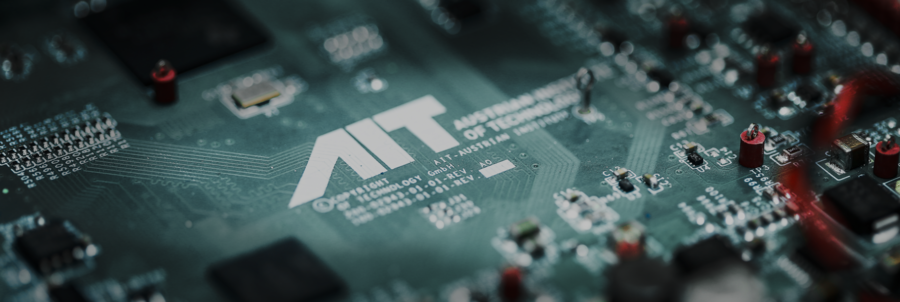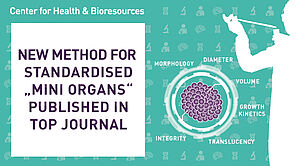Anna Gerhartl and Winfried Neuhaus from the Competence Unit Molecular Diagnostics of the Center for Health and Bioresources developed novel blood-brain barrier spheroids together with cooperation partners from TU Wien.
In order to reproduce tissues or organs in their three-dimensional (3D) structure with cell culture models, so-called organoids or spheroids are produced from one or more cell types. The 3D structure and spatial arrangement of the different cell types within the organoids/spheroids is essential for the correct replication of the functional units. There are a number of methods to fabricate organoids or spheroids, with the major problem of reproducibility and comparability of the different models. Major factors on the function of the organoids/spheroids are the size, the roundness, i.e. the shape, as well as the nutrient supply and the cell number with which the organoids/spheroids are started to grow.
For a systematic approach to study the influence of these parameters, a microfluidic array was developed and used for the production of organoids of different tumor types and spheroids of the blood-brain barrier.
It was shown that the shape, the number of cells at the start of cultivation and consequently the size have significant influence on the function of the organoids. This has an enormous influence on the results obtained using organoid models in screening experiments, for example, to identify new cytostatic drugs for the treatment of tumors and to describe their effect.
The blood-brain barrier spheroids consisted of three different cell types (astrocytes, pericytes, brain endothelial cells). Their composition was optimized for measurement of the selected parameters in the spheroid model. It was shown that the transport of drugs across the blood-brain barrier and the mimicked breakdown of the barrier clearly depend on the size and composition of the spheroids.
Based on these studies, it was shown that the shape, size, and cellular composition of organoids and spheroids determine their function and are thus essential parameters to establish comparable cellular measurement systems. The developed microfluidic array can be used to optimize the most appropriate parameters for each application.
Christoph Eilenberger, Mario Rothbauer and Prof. Peter Ertl from TU Wien and Anna Gerhartl and Principal Scientist Winfried Neuhaus from the Biological Barriers Group of the Competence Unit Molecular Diagnostics at the Center Health and Bioresources contributed significantly to this work.
This work was published in the top journal Advanced Science (impact factor 15.84). The article can be found at the following link: A Microfluidic Multisize Spheroid Array for Multiparametric Screening of Anticancer Drugs and Blood–Brain Barrier Transport Properties - Eilenberger - 2021 - Advanced Science - Wiley Online Library



